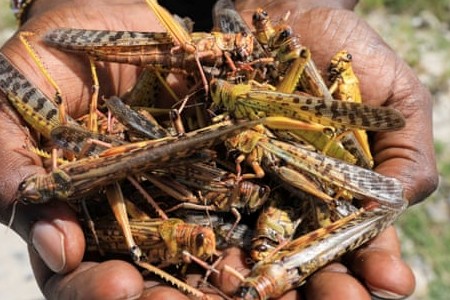July 5, 2020 – When I was younger, every spring my family would drive up to the marina on the edge of Blackstone Lake where we would hop in our boat and drive it to our cottage. As beautiful as this sounds, I’ve left out the unsavory part of the idyllic setting.
A plague of blackflies and mosquitoes used to envelop us from the moment we left our car until we got out on the lake. Then upon arrival at the dock beside the cottage, the pests would return in force.
Even if the weather was warm you kept completely covered. I remember the hat with the netting that covered my face and neck, and having to put on long socks and tuck my jeans in them. Even our hands needed to be covered.
Despite all of that protection which often included a generous spraying of insect repellent, we got bitten. The mosquitos were nothing compared to the blackflies which would land and crawl under all that protective layering to find a nice surface capillary to drill into.
I keep thinking about those days anytime I read about insect plagues such as the ones currently infesting East Africa. My memories don’t equal what is currently happening there with billions of Desert Locusts descending on villages and farms, wiping out crops, and competing for the grass that nourishes sheep, goats and cattle.
Schistocerca gregaria is the Latin name for the Desert Locust. And since the fall of2019 and into 2020, these insects have been the beneficiaries of an extreme weather event that occurred back in May of 2018 when a tropical cyclone named Mekunu caused heavy rainfall over the Arabian Peninsula leading to the perfect environment for desert locusts to breed.
Mekunu was the 8th tropical cyclone to develop in 2019. When it crossed into Oman and Saudi Arabia’s Empty Quarter, the rain left standing pools of water across the desert floor, perfect breeding grounds for insects, and among them the Desert Locust.
Mekunu’s rain resulted from a warming Indian Ocean which is today is seeing temperature increases faster than any other large body of water on Earth. The average increase has been 1.2 Celsius (2.2 Fahrenheit). With warmer water comes increased evaporation and subsequently increased rainfall leading to one of the wettest rainy seasons ever seen in East Africa. Djibouti City near the southern access of the Red Sea saw 336 millimeters (13.2 inches) fall in four days, an amount equal to two normal years of precipitation.
The Desert Locusts have bred in the billions and followed the winds to Africa. The first wave arrived at the end of 2019 destroying 70,000 hectares (270 square miles) in Ethiopia and Somalia and 240,000 hectares (926 square miles) in Kenya. Since then several new waves have arrived, and with East Africa seeing above-average precipitation, the insects have bred and moved on to other parts of the African continent where they are eating their way through food crops and grazing lands. Kenya described the infestation as the worst seen in 70 years. Ethiopia says it is the worst the country has experienced in 25 years.
The geopolitical challenges Africa faces plus the arrival of the coronavirus pandemic has further exacerbated the plague of locusts. Coordinating a common response has been near impossible. Limited financial resources have made it impossible to control the locusts upon arrival. Conflict in Somalia has given those fighting the infestation limited to no access to breeding grounds. And COVID-19 lockdowns have made it next to impossible for farm families let alone urban dwellers to contribute physically to the fight.
In a June 30, 2020 article published in Nature Climate Change, authors Abubakr Salih, Marta Baraibar, Kenneth Kemucie Mwangi, and Guleid Artan, of The Intergovernmental Authority on Development Climate Prediction and Applications Centre, in Nairobi, Kenya, write:
“The recent locust outbreaks and the role of Indian Ocean warming show that the impact of climate change is not merely the consequences of changes in mean temperature, but also of increases in extreme and unprecedented events. Such extremes are exacerbated further in a butterfly effect by non-climate factors such as political instability, armed conflicts, poor governance, weak early warning systems, and limited financial resources, hurting the most vulnerable communities.”
The increase in Indian Ocean extreme weather events with cyclones like Mekunu has been linked to anthropogenic climate change, making this part of the African continent and its population more vulnerable than at any time in recorded history. This threatens both human and animal food security. The solutions to mitigate climate change and its risks are well known but not necessarily easy to execute without the political will and the majority within countries to back it up. The remaining questions:
- Can mitigation measures reduce Desert Locust incursions and numbers?
- Can African and Arabian countries cooperate to face and beat back the challenge?
- Can wealthier countries help in the task?









